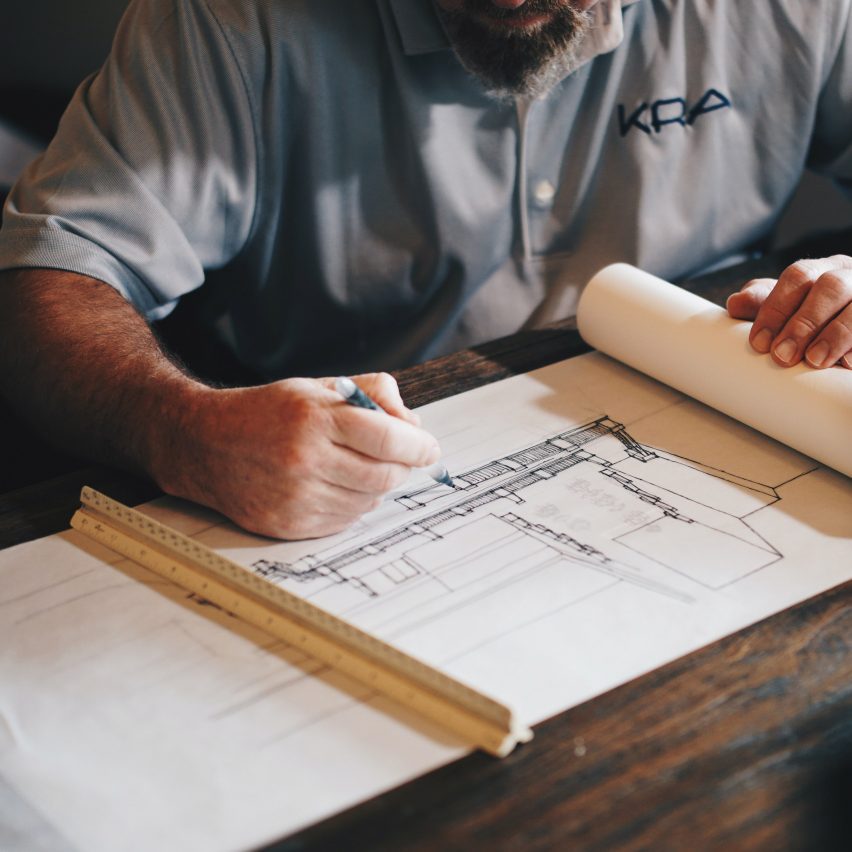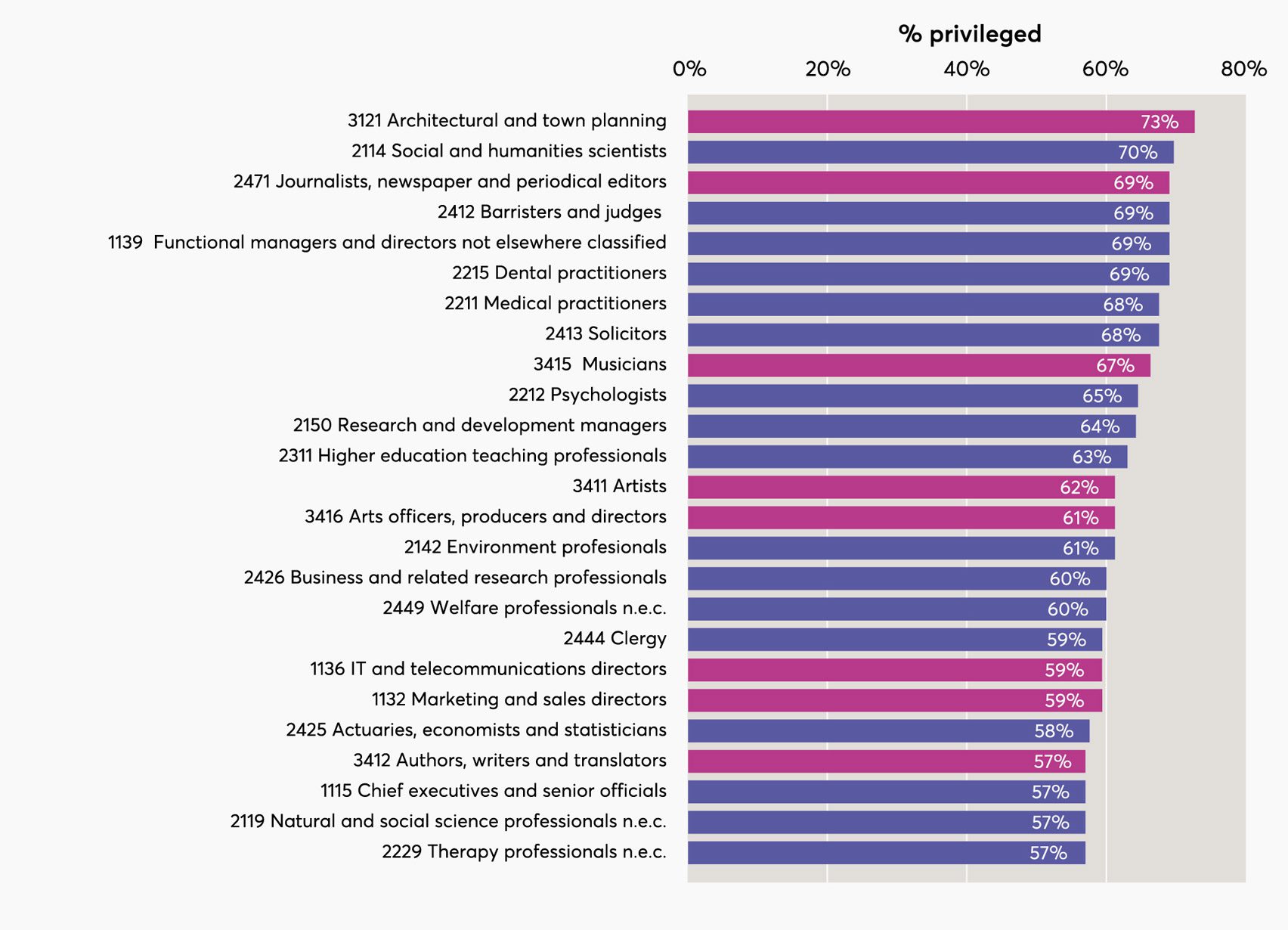
A report by the Creative Industries Policy & Evidence Centre has found that architecture is among the most privileged industries of the UK economy.
The report, called Social Mobility in the Creative Economy, reveals that 73 per cent of workers in the architecture industry are classed as privileged.
This means architectural careers such as architects, town planning officers, and technicians rank as number one in the study's list of the 25 most elite occupations in the UK.
The report also found that class-based exclusion is more prominent in the creative industries than in other sectors of the economy, with other creative occupations ranking in the top 25 most elite including artists, journalists and musicians.
Architecture sector "dominated by the privileged"
"Creative occupations such as architects; journalists and editors; musicians; artists; and producers and directors are, in fact, as dominated by the privileged as doctors, dentists, lawyers and judges," the report states.
"They are even more elite than management consultants and stockbrokers," it continues.
The report also found that in 2020, those from privileged backgrounds were twice as likely to be employed in the creative industries as those from working-class backgrounds (9.8 per cent and 4.9 per cent respectively.)

The Social Mobility in the Creative Economy report was carried out by Heather Carey, Dave O'Brien and Olivia Gable as part of a three-year programme led by the Policy & Evidence Centre (PEC) exploring class in the creative industries.
The statistics draw on a Labour Force Survey from July to September 2020. These surveys are carried out quarterly by the Office for National Statistics to record the UK population's employment circumstances.
In the report, privilege is defined as people who had at least one parent who worked in a "higher or lower managerial, administrative or professional occupation" when they were age 14.
This references the National Statistics Socio-Economic Classification (NS-SEC), which clusters various occupations together into eight groups. The report considers those who belong to groups I or II, which includes doctors, CEOs and lawyers, to be privileged.
One in four creative roles filled by working class
The report also states that in 2020 just one in four people working in the creative industries sector were from lower socio-economic backgrounds, and this has remained largely unchanged since 2014.
This means that the UK's creative industries would need to employ 250,000 more working-class people to become as socio-economically diverse as the rest of the economy.
The UK’s #CreativeIndustries would need to employ 250,000 more working-class people to be as socio economically diverse as the rest of the economy. This deficit is equivalent to size of creative workforce in Scotland, Wales & NI combined.
New researchhttps://t.co/eOgaPppU62
1/5 pic.twitter.com/TYCpG3jVwq— Creative Industries Policy & Evidence Centre (PEC) (@CreativePEC) September 9, 2021
A graphic showing the difference in socio-economic diversity between the creative industries and the rest of the economy
"To put this figure in perspective, this deficit is greater in scale than the size of
the creative workforce in Scotland, Wales and Northern Ireland combined," the report states.
As such, the authors of the report have also called on the government and industry to adopt a 10-point plan to establish a socially inclusive creative economy.
Recommendations include prioritising creating fair foundations for success and widening access to higher education, eliminating unpaid internships and accelerating the progression of diverse talent.
Last year, Open City director Phineas Harper also raised the alarm about privilege in the architecture profession, stating that the industry is dominated by people who went to private schools.
This was prompted by an analysis of the architecture studios featured in the Architecture Foundation's 2016 book New Architects 3, which found that just 45 per cent of their founders had been to state schools.
Harper, who is also a Dezeen columnist, said that "Succeeding in architecture practice is more elitist than the most elite university in the world."
The main image is by Daniel McCullough via Unsplash.
The post Architectural professions top list of elite occupations in the UK appeared first on Dezeen.


Tidak ada komentar:
Posting Komentar